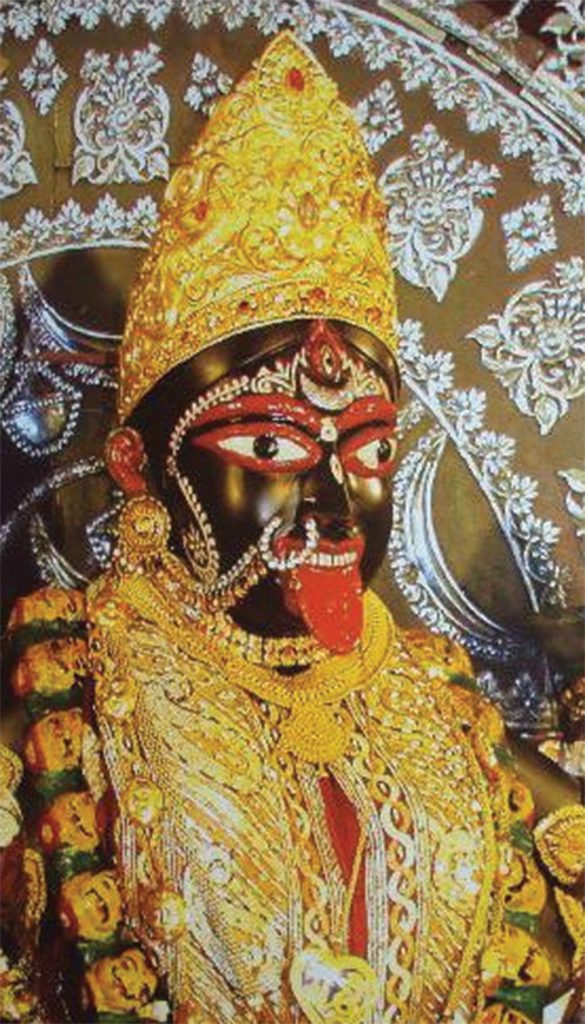Dakhshineshwar Temple

Way back in 1847, the wealthy widow, Rani Rashmoni, prepared to make a pilgrimage to the sacred city of Banaras to express her devotion to the Divine Mother. In those days there were no railway lines between Calcutta and Banaras and it was more comfortable for rich persons to make the journey by boat rather than by road. The convoy of Rani Rashmoni consisted of twenty-four boats carrying relatives, servants and supplies. But the night before the pilgrimage began, the Divine Mother, in the form of Goddess Kali, intervened.

Appearing to the Rani in a dream, she said, “There is no need to go to Banaras. Install my statue in a beautiful temple on the banks of the Ganges and arrange for my worship there. Then I shall manifest myself in the image and accept all sincere prayers.”

Profoundly affected by the dream, the Rani immediately purchased land in the village of Dakshineshwar and promptly began to construct the temple. The large temple complex, built between 1847 and 1855, had as its centerpiece a shrine dedicated to Goddess Kali, and there were also temples devoted to the deities Shiva and Radha-Krishna. A scholarly, elderly sage was chosen as the head priest and the temple was consecrated in 1855.

Within the year the priest died and his responsibilities passed to his younger brother, Ramakrishna, who, over the next thirty years, would bring great fame to the Dakshineshwar temple.Ramakrishna considered Goddess Kali as his holy mother and was often found in a trance on the temple floor. Today, Dakshineshwar is considered to be one of Indiaʼs most sanctified shrines where thousands of people throng every day to pray.

